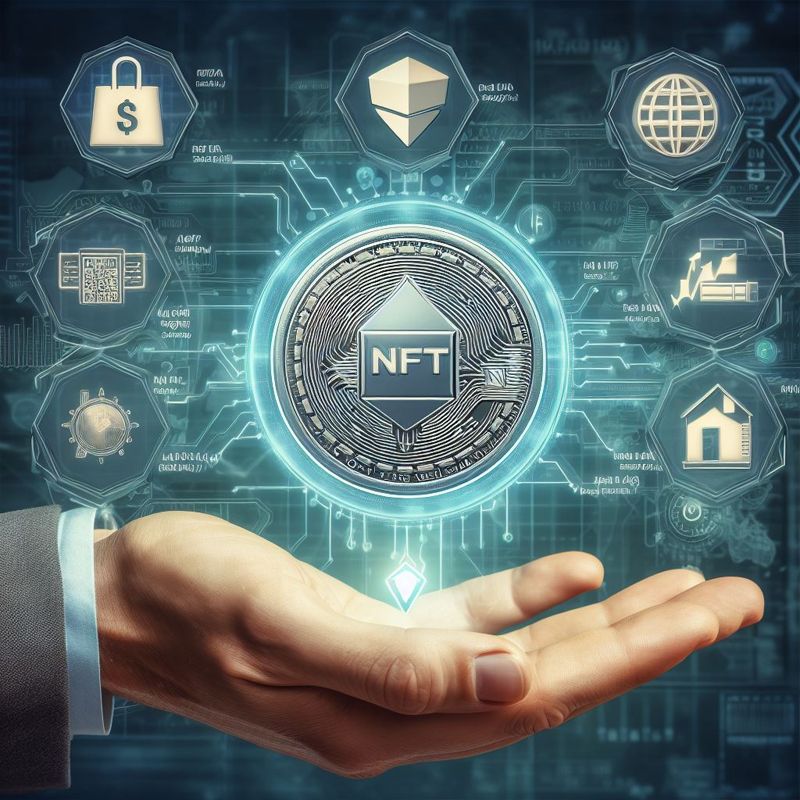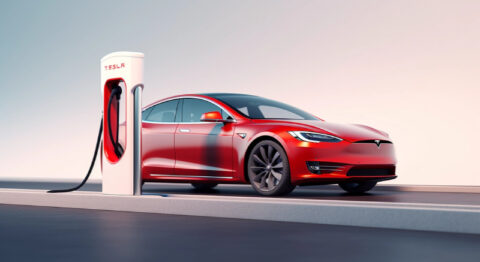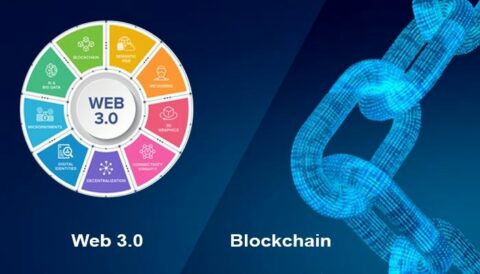You’ll need a crypto wallet and cryptocurrency (or, in some situations, just a credit or debit card) to purchase an NFT. You can use OpenSea to buy products posted for sale immediately, bid in auctions, or make offers on any NFTs.
What is an NFT?
A non-fungible token (NFT) is a one-of-a-kind digital asset kept on a blockchain. NFTs can represent nearly anything, including art, memberships, and in-game assets, and they serve as a digital record of ownership.
NFTs use blockchain technology. The blockchain is essentially a massive digital public record. Because the most popular blockchains are dispersed among numerous nodes (read: people’s computers), they are referred to as “decentralized.”
As a result, rather than a single company-owned server, the blockchain is dispersed throughout a peer-to-peer network. Because it captures and retains history, blockchain is well-positioned to transform verifiable authenticity and digital ownership.
When someone makes, transfers, buys, sells, or otherwise interacts with an NFT, it is all recorded on the blockchain. This is what allows authentication.
This document acts as a permanent declaration of authenticity that anybody can view or access. When you acquire a work of art or a collector’s item nowadays, it usually comes with a paper certificate of authenticity, which you must keep track of for the rest of your life. It is readily forgotten, lost, or destroyed, resulting in an extremely weak system of authenticity. Blockchains provide a simple and more secure answer to the long-standing problem of verifying authenticity.
What is required to buy an NFT?
You must create a crypto wallet in order to purchase NFTs. Your NFTs and bitcoin are stored in a program called a crypto wallet.
There are custodial (“hosted”) wallets and non-custodial wallets. Custodial wallets are controlled by a third-party company, whereas non-custodial wallets are not. Custodial wallets are like storing your goods in a storage facility, but non-custodial wallets are like storing them in your house safe. Custodial wallets need less responsibility but have hazards associated with a third party (for example, if the storage facility is looted). Non-custodial wallets provide you complete control, but they also require you to be extra cautious (for example, not losing your key or mistakenly throwing away anything significant when you reorganize your wardrobe).
Software and hardware wallets are examples of non-custodial wallets.
A software wallet is a program that runs on your computer or web browser. This makes software wallets an excellent choice for rapidly and easily purchasing, trading, and transferring NFTs and bitcoin.
A hardware wallet is a physical device that you can use by plugging it into your computer. It’s a good option for long-term secure storage because it’s not always connected to your computer or browser, but it’s less handy for quick or frequent transactions.
Different blockchains are supported by different wallets, and not all wallets enable NFTs. Here are some OpenSea-compatible wallets:
Metamask (Ethereum, Polygon, Klaytn)
Coinbase Wallet (Ethereum, Polygon, Klaytn)
NFT purchases take place using Bitcoin, while many NFTs on OpenSea can be purchased with a credit or debit card.
What is minting?
The act of “minting” an NFT is the act of adding a digital item to the blockchain. This creates an unchangeable record of legitimacy and ownership. Because the mint is when an NFT from a project is written to the blockchain, you are the first-ever owner of that NFT.
Minting your work as a creator lets you establish demonstrable scarcity and validated ownership. For the first time, producers can publish limited-edition digital works with blockchain authentication. Ownership is unquestionable and public, allowing creators to create exclusive communities and benefits for those who possess their NFTs.
However, minting NFTs isn’t just for artists. NFT initiatives will frequently provide early access to their NFTs through a mint. Because the mint is when an NFT from a project is written to the blockchain, you are the first-ever owner of that NFT.
A step-by-step guide to purchasing your first NFT on Opensea
Let’s go over the purchasing process for NFTs.
1. As was already said, buying an NFT can be done in a number of ways. By selecting the “Buy now” option, we’ll purchase an NFT that is up for sale in this case.

2. Connect your crypto wallet
You will be requested to connect and set up your crypto wallet at this point if you haven’t already.

3. Choose your payment method
You will then have the option of paying with a credit card or crypto. We’ll use a card in this example. You must add crypto to your wallet if you wish to make a purchase using cryptocurrency.

4. Review fees
You might have noticed that your total is higher than the NFT’s quoted pricing. This is due to network (“gas”) expenses and, if you pay with a credit card, processing fees. Every transaction on the blockchain incurs a gas fee, the amount of which varies based on a variety of factors, including the current network load. These charges are not made payable to OpenSea.

5. Enter your payment information
To finish your transaction, follow the instructions and enter your information. You could be required to provide identification if you’re using MoonPay for the first time and making a card purchase.

6. Your purchase is complete!
Your NFT purchase is completely complete and has been written to the blockchain once you’ve completed all of the required information and selected “Pay.” Congratulations on your purchase of an NFT!

7. Check out your newest NFT
Your brand-new NFT should be visible in your collection after a few seconds. Your new NFT will be shown in your OpenSea profile!

Conclusion
Purchasing NFTs involves a few key steps. Firstly, choose a reputable NFT marketplace such as OpenSea, Rarible, or Mintable. Create an account and connect a compatible cryptocurrency wallet like MetaMask. Browse the available NFTs and use the connected wallet to bid on or buy the chosen digital assets. Ensure you understand the specific terms and ownership rights associated with the NFT you’re interested in. After completing the transaction, the NFT will be stored in your wallet’s digital collection. Remember to exercise caution, conduct thorough research, and only invest in what you’re comfortable with, as the NFT market can be volatile and speculative.
FAQs
Q. How much does it cost to purchase 1 NFT?
A. The cost to buy 1 NFT (Non-Fungible Token) can vary significantly depending on factors like the platform, the artist or creator, the rarity, and the demand for the specific NFT. Prices can range from a few dollars to millions of dollars for high-profile NFTs. It’s important to research and check the current listings on NFT marketplaces to get an accurate understanding of the cost.
Q. How can I invest in NFTs?
A. Research: Learn about NFTs and their potential value.
- Choose a Platform: Select a reputable NFT marketplace like OpenSea, Rarible, or NBA Top Shot.
- Set Up a Wallet: Create a digital wallet like MetaMask to store your NFTs.
- Buy NFTs: Browse listings, place bids, or purchase NFTs using cryptocurrency.
- Due Diligence: Verify the authenticity and creator of NFTs before buying.
Q. How can I invest in NFTs in India?
A. To invest in NFTs (Non-Fungible Tokens) in India, follow these steps:
- Research NFT marketplaces like WazirX, ZebPay, or international platforms.
- Create an account on a chosen platform, and complete KYC verification.
- Fund your account using INR or cryptocurrencies like Bitcoin or Ethereum.
- Browse and bid on NFTs you’re interested in.
- Transfer purchased NFTs to a secure wallet. Remember to consider legal and tax implications before investing.
Q. Does Bitcoin have NFTs?
A. No, Bitcoin itself does not natively support NFTs (Non-Fungible Tokens). NFTs are typically associated with other blockchain platforms, like Ethereum, that provide the necessary infrastructure for creating and trading these unique digital assets. Bitcoin’s blockchain focuses primarily on its role as a decentralized digital currency and doesn’t have built-in support for the complex functionality required for NFTs.
Q. Is NFT legal in India?
A. As of my last knowledge update in September 2021, NFTs (Non-Fungible Tokens) were not explicitly regulated in India. However, their legal status could have evolved since then. It’s recommended to consult legal experts or official sources for the most up-to-date information regarding NFT legality in India.











